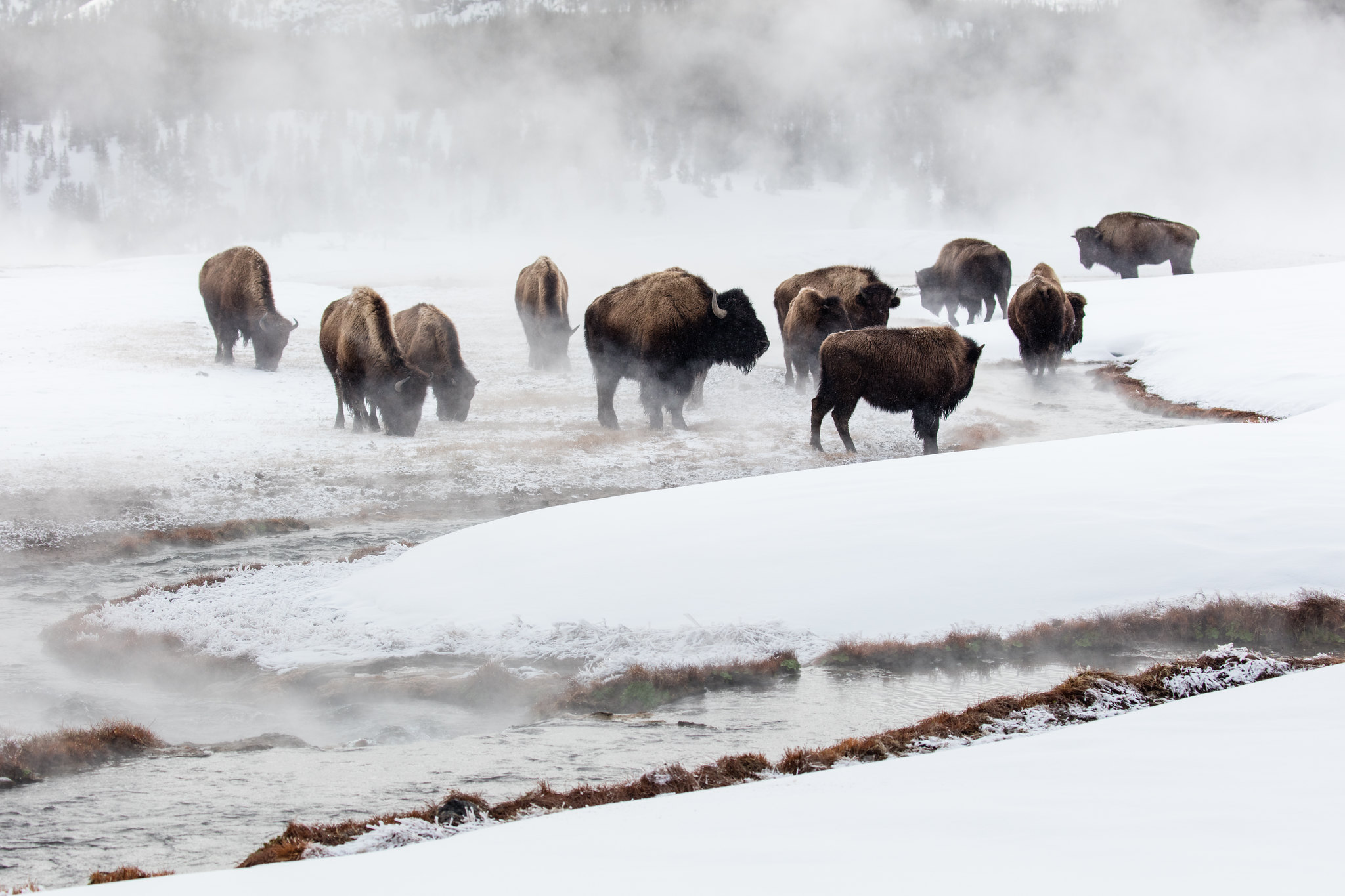Montana filed a lawsuit against the National Park Service and other officials Tuesday over Yellowstone’s 2024 bison management plan, which raises the ceiling on the national park’s free-ranging population from 3,000 animals to 6,000 animals. The new plan, implemented in July, also prioritizes transferring live bison to help restore tribal buffalo herds.
But according to the complaint filed last week by Montana’s governor, the Montana Department of Livestock, and Montana Fish, Wildlife and Parks in U.S. District Court, an expansion of Yellowstone’s bison herd violates federal laws and puts the burden of protecting livestock from brucellosis, a reproductive disease, on Montanans.
“The National Park Service has repeatedly and consistently failed to engage with the State in a meaningful and transparent manner as required by law throughout the planning process,” Gov. Greg Gianforte said in a Dec. 31 press release. The lawsuit comes after Gianforte signaled forthcoming legal action in a letter to DOI secretary Deb Haaland earlier this year. “NPS has not given us a fair shake and has ignored concerns raised by the State. We will always defend our state from federal overreach.”
It’s the latest installment in a decades-long conflict over managing the park’s bison herd and the risk of brucellosis. YNP’s 2024 bison management plan is, according to the complaint, simply “an effort to cover [the park’s] inability to manage bison” at the 3,000 animals agreed upon in its 2000 plan.
“…in the 1960s, YNP threw active herd management to the wind. The bison population boomed, spilling brucellosis-infected bison into Montana and forcing the State to pick up YNP’s slack in order to protect its livestock industry from the disease,” reads the complaint. “Over the last 20 years [since the 2000 plan], YNP has utterly failed to manage to the specified population target or implement critical elements of its plan.”

Yellowstone officials have pushed back, arguing that the 2024 management plan was properly implemented after a new environmental impact statement found Yellowstone can support the new target range of 3,500 to 6,000 bison. That aligns with the recent 10-year average of about 5,000 bison, according to the YNP record of decision from July.
This adjusted population target, YNP officials say, reflects changes to both the landscape and public opinion since the 2000 plan was agreed upon, as well as better research that has reshaped wildlife and livestock manager’s understanding of brucellosis transmission. In addition to fewer cattle grazing near the park today, researchers say elk have transmitted brucellosis to cattle — not roaming bison.
For instance, a 2020 study found that elk had transmitted brucellosis to livestock in the Greater Yellowstone Area at least 27 times since 1998 with no transmissions attributed to bison.
“Despite higher bison numbers than envisioned in the 2000 [Interagency Bison Management Plan], bison-human conflicts outside YNP have been reduced over time,” according to the NPS. “There have been no documented cases of brucellosis transmission from bison to livestock since the 2000 IBMP. Tribal harvest and public hunting largely replaced agency hazing to control bison numbers and distribution outside the park. Landowner complaints have decreased over time. Public surveys indicate increasing local and regional acceptance of bison.”
Yellowstone says it will continue to manage bison numbers by primarily transferring live animals to tribes to help restore tribal buffalo herds, providing meat and hides to tribes, and by relying on state and tribal hunters to shoot bison outside park boundaries.
When the park’s population rises to 5,200 bison, or what the NPS calls a “population assurance threshold” (presumably to reassure states outraged over the increased 6,000 cap) then “the NPS will begin to manage for a declining bison population by relying primarily on Tribal and state harvests.”
In other words, as bison numbers rise, the NPS will ship more live animals to tribes and allow more bison to be transferred to tribes for meat and hide. If the number falls below 5,200, the NPS says it will still transfer live bison to tribes and reduce its reliance on other management strategies. If the late-winter population nears 3,000 animals, the NPS “will protect the population inside the park and encourage partners to reduce hunting outside the park.” Tribal and public bison hunts outside park boundaries began in 2006. Since then, tribal hunters alone have killed more than 4,000 bison outside the park.
“Buffalo have been subjected to the whims of the stockgrowers and the cattle industry forever since cattle arrived and so that status quo is something that needs to be challenged,” Jason Baldes, a member of the Eastern Shoshone Tribe,told Wyoming Public Media in August. Baldes has been working to restore buffalo to the Wind River Reservation in Wyoming, as we reported in 2023, and has relied, in part, on bison shipments from Yellowstone National Park to do so.
Since 2000, more than 6,000 Yellowstone bison have been captured, “almost entirely by the NPS, and transferred for processing to control population numbers,” the NPS writes, citing its willingness to capture and relocate bison as part of its commitment to managing the population. “The NPS has made enormous and often disproportionate efforts and investments in using transfer for processing to control numbers and minimize brucellosis transmission risk since the 2000 IBMP. Montana has not captured or shipped a bison for processing since 2008.”
Read Next: The Buffalo Revivers of the Wind River Reservation
As the lawsuit makes clear, Montana doubts NPS will be able to properly manage the growing herd, even after the park doubled capacity at its bison-transfer facility in 2023. The lawsuit also cites several recent studies, including a 2020 finding that Yellowstone bison are damaging vegetation, thereby contributing to stream bank erosion and hindering ecosystem recovery in the Lamar Valley. The suit also accuses NPS of neglecting to consider the impacts of “larger bison transfers across Montana’s landscape” to humans and wildlife.
The NPS, which has not yet responded to the lawsuit, did not immediately respond to OL for a request for comment.

